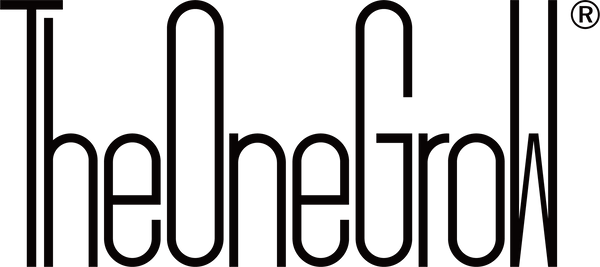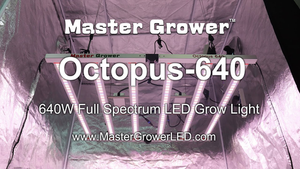Today, indoor grow lights are gradually entering people's lives. These are not only for lighting or decoration purposes, but also for applying LED lights in other industries. This is typically led lighting in agricultural production.

Why should you use LED lights for plants?
Not only is it a highly energy-efficient product, LED light is also very useful in improving crop yields without causing any harm to the product. Typical is the achievement of GE Lighting - a lettuce farm in Japan that has produced 10,000 plants per day.
Another study by McGill University in Canada also showed that LED light has the ability to promote tomato production. It is to improve the yield of bedweed according to research by scientists at Purdue University.
All show that flexible use of different colors of indoor grow lights helps the plant's photosynthesis process take place faster.
The need to use indoor grow lights for plants
This is a non-essential energy source for plants and animals to live. Plants have the characteristic that they can only absorb a certain range of light, not the entire light range. The application of modern led technology will help plants absorb more light and bring efficiency high.
The demand for light for plants is increasing day by day
Currently, there are many research laboratories for the production of crops from short-term plants to food crops and fruit trees that apply indoor grow lights technology.
A type of plant will absorb a different range of light, so people create each appropriate bulb to match the type of plant so that the plant can absorb the best.
Using this technology will reduce a part of costs. This increases efficiency and be applied to growing plants in greenhouses. Moreover, it produces clean agricultural products for consumers.
In order to promote the photosynthesis of plants to appear faster, it is recommended to apply the method of lighting with lights. The plants quickly develop an agricultural production model using LED lighting technology that is economically efficient.
How do indoor grow lights help in indoor planting?
Thereby the growth of plants takes place quickly when using LED lights. In addition, LED lights do not contain harmful rays using clean light to improve the quality of agricultural products. Moreover, it increases nutritional value. Indoor grow lights provides customers with a source of clean food
Experiments show that when using LED light to process clean food, the lamp also reduces the nitrate concentration of the product, and creates heat with other light bulbs, so photosynthesis occurs.
Lettuce farm in Japan
The lettuce farm in Japan is a typical example with a fairly large area, about 2300m2; using OCTOPUS X SERIES led tubes. This is a farm that uses an ideal environment for agricultural production, with clean room, food safety and hygiene standards.
The farm uses a customizable sensor for the LED to adjust accordingly for each lettuce growing cycle. Thanks to that, this farm has brought to market 10,000 heads of lettuce continuously every day.
Using LED lights to increase the yield of tomato plants
In addition, people have also applied Indoor grow lights to two projects to improve yield for tomatoes. It is the first project of Purdue University and farms. The team observed the growth of several plant species, and gave positive results when applying LED technology to Petunia, Salvia and Viola. This result is also similar to the results of some other studies
Using LED lights to increase the yield of tomato plants
Thus, LED lighting with outstanding features compared to other lamps in terms of features and efficiency, has been gradually replacing other products.
Worthy of being a leading lighting product in the modern lighting industry, led lights have many types such as Octopus tube lights that are very suitable for many different needs.
Introduction to LED for plants
LED agricultural grow lights technology has progressed to today. LED grow lights have been used for indoor cultivation as well as for commercial purposes hydroponics or aquaponics.

Currently the Indoor grow lights market has proven its success in growing crops from cannabis, lettuce to vegetables and even strawberries… The market continues to thrive as a number of LED suppliers have developed. LED technology goes one step further with exciting new research.
LED grow light, a new era
After a difficult period with LED technology, growing crops with LED technology has become mainstream, looking back on LED technology now is not only an option.
Choose to save energy over high-power high-pressure lamps. They are useful means of growing crops in small spaces.
Growing Plants with LEDs – A Changing Pattern
Within 40 years, indoor growers had only a few options when they decided to choose lights for their indoor plants.
They are most recently, compact fluorescent lamps. In all cases, the meaning is the same, try to create light almost like sunlight to illuminate the house plants. Plants need sunlight through photosynthesis to synthesize the energy needed to grow and bear fruit.
Why Indoor grow lights are best to use?
As you know sunlight is white light, it is safe to say that sunlight consists of light in a wide range of spectral ranges that are completely visible to the naked eye (red, orange, yellow green, blue , indigo and violet ) along with radiated light in the invisible spectrum such as ultraviolet ( Ultraviolet - UV ), gamma rays and infrared rays .
Led grow plants
Traditional Indoor grow lights have attempted to mimic this white light and have also had some limited success, due to the inefficiencies of these light sources. Different plants have different light needs; almost all plants grow with only a limited area of the light spectrum – red, orange and blue.
This is because many of the chemical processes and chemicals in optics are ready to take place and sometimes only in this region of light. However, only about 15% of the light emitted by high-pressure (HID) or compact fluorescent lamps is in the light spectrum required for plant photosynthesis.
In contrast, 90% to 99% of the light emitted by LEDs can be used immediately for plant photosynthesis.
Led grow plants for Future Planting
Because of this, the traditional historical planting techniques, light cycles, warming and cooling of nutrients and the plant's water needs are also modified and this is very difficult in the process.
We also need to change the cycle of planting trees, growing leaves and flowers. Each seed packet contains information on how to grow indoors or outdoors. Currently all current guidelines are based on the assumption you are using high pressure lamps which we all know are completely unique compared to LEDs.
Summary
As we all understand that LED grow lights provide 6 to 8 times the light in the essential spectrum for growth, it becomes clear we all need to change our plans to reap the benefits. Indoor grow lights have achieved excellent success.
LED grow lights are not necessarily more complicated or more technical than high pressure lamps or compact fluorescent lamps, they are simply a different application and, importantly, do not affect the image quality. Indoor grow lights affect the nutritional composition of plants.

